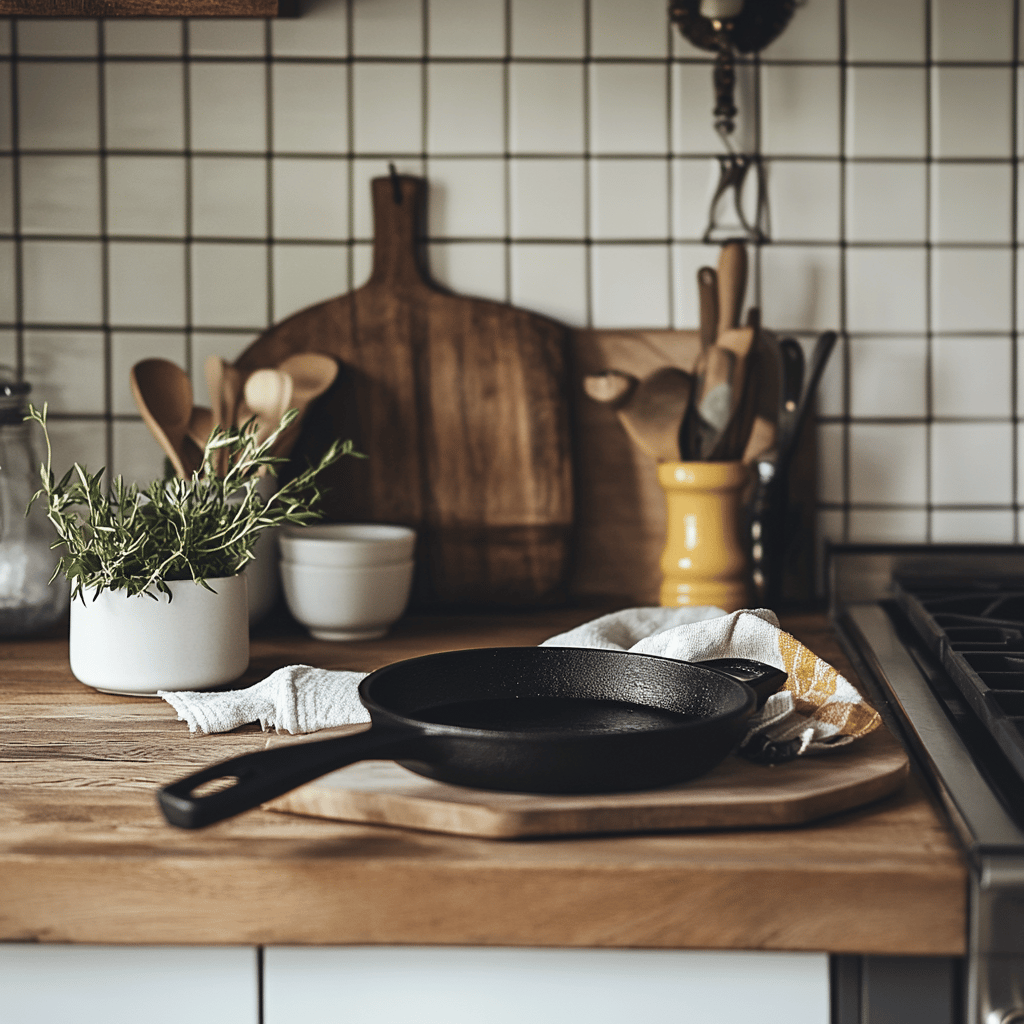The Best Fluffy Pancakes recipe you will fall in love with. Full of tips and tricks to help you make the best pancakes.

Lodge Says Stop Doing This: The Real Way to Clean Cast Iron
Cleaning cast iron cookware can be a challenge, but it doesn’t have to be! In this post, we’ll explore the best practices for caring for your cast iron and the common pitfalls to avoid. From proper cleaning techniques to seasoning tips, we’ve got you covered!
Introduction
Cast iron pans are beloved in kitchens across America, known for their ability to retain heat and distribute it evenly. However, one of the biggest misconceptions about these culinary gems lies in their cleaning and care. Lodge, the iconic cast iron cookware brand, has observed numerous cases of care that might be doing more harm than good. In this comprehensive guide, we will dive deep into the dos and don’ts of cleaning and maintaining your cast iron cookware, ensuring you can enjoy its benefits for years. Whether you’ve inherited a treasured pan or are looking to invest in your first piece, understanding the right way to clean cast iron is essential for preserving its unique qualities.
The Importance of Proper Cast Iron Care
Before we delve into the cleaning process, let’s understand why proper care is so crucial for cast iron cookware:
- Longevity: With the right care, cast iron can last for generations, becoming more seasoned and non-stick over time.
- Flavor: A well-maintained cast iron skillet enhances the flavor of food, as fats and seasonings build up over time.
- Health: Cast iron can sometimes add a small amount of iron to your food, providing a supplement for those who may be deficient.
Common Misconceptions About Cleaning Cast Iron
Many people make mistakes when it comes to cleaning their cast iron cookware. Here are the most common misconceptions:
Myth #1: Soap is Bad for Cast Iron
Many believe that using soap will strip away the seasoning of cast iron. While it’s true that abrasive soaps can be harmful, a mild soap can be used sparingly without damaging your skillet’s seasoning if you also follow up with a re-seasoning process.
Myth #2: You Should Never Soak Cast Iron
Soaking cast iron in water for extended periods is not recommended, as it can lead to rust. However, a quick soak to loosen stuck-on food is acceptable.
Myth #3: Scraping is Always Necessary
While scraping is often recommended for removing burned food, it’s not necessary for every cleaning session. Appropriate tools can make the process easier without damaging the surface.
Step-by-Step Guide to Cleaning Cast Iron
Now that we’ve debunked some myths, let’s dive into a step-by-step cleaning process that’s endorsed by experts—including Lodge!
Step 1: Gather Your Supplies
Before you start cleaning, make sure you have the following items:
- Coarse salt or a safe abrasive (like baking soda)
- A soft sponge or cloth
- A wooden or silicone spatula
- Paper towels or a dish cloth for drying
- Oil for seasoning (vegetable, canola, or flaxseed oil work well)
Step 2: Clean Immediately After Use
Cleaning your cast iron skillet immediately after use is crucial. Here’s how to do it:
- Let the skillet cool slightly but remain warm (not hot) to the touch.
- Use hot water and a soft sponge or cloth to wipe away food particles. For stuck-on bits, sprinkle a little coarse salt and use the sponge to scrub.
- Rinse the skillet thoroughly with hot water.
Step 3: Dry Thoroughly
Moisture is the enemy of cast iron. To prevent rust, dry your skillet thoroughly:
- Use paper towels to wipe the surface.
- Place the skillet on low heat for a few minutes to ensure it’s entirely dry.
Step 4: Re-season Your Skillet
Seasoning is essential for maintaining your cast iron’s non-stick surface and preventing rust:
- Once the skillet is dry, apply a thin coat of oil both inside and outside.
- Using a cloth or paper towel, distribute the oil evenly and remove any excess.
- Place the skillet upside down in an oven preheated to 350°F (175°C) for about one hour.
Tips for Storing Cast Iron Cookware
Proper storage can help maintain your cast iron cookware and prolong its life:
- Store your skillet in a dry place.
- Place a paper towel between the skillet and any lid to absorb moisture.
- Avoid stacking your cast iron with other items unless they are protected with a cloth or paper towel.
Signs Your Cast Iron Needs Extra Attention
Sometimes your cast iron may require more than just a quick cleaning. Here are some signs to watch for:
Rust Formation
If you see rust, you can restore your skillet with a few simple steps:
- Scrub the rusty area with steel wool or a stiff brush.
- Wash, dry, and re-season the skillet following the steps above.
Patches of Stickiness
If food begins to stick to your skillet, it may need to be re-seasoned:
- Wash and dry the pan as described earlier.
- Re-season it by applying oil and baking it in the oven.
Flaking Seasoning
Flaking seasoning can occur if the skillet is overheated. To fix this:
- Strip the skillet back to bare metal using a rust eraser or sandpaper.
- Follow up by seasoning it to restore its non-stick properties.
Frequently Asked Questions
Can I put my cast iron in the dishwasher?
Absolutely not! Dishwashers can strip the seasoning and cause rusting.
Is it safe to store food in cast iron?
Long-term storage of food in cast iron isn’t recommended, especially acidic foods like tomatoes, as these can strip the seasoning. Instead, transfer leftovers to another container.
Can I use metal utensils on my cast iron skillet?
Yes, metal utensils are safe to use on cast iron, but take care not to scratch the surface during cleaning.
Conclusion
Proper care of your cast iron cookware doesn’t have to be daunting. By following these guidelines, you can ensure that your skillet remains a cherished tool in your kitchen for decades to come. Remember the importance of immediate cleaning, thorough drying, and regular seasoning for optimal performance and longevity. If you’re looking for delicious meals to whip up in your cast iron, check out our 3-step chicken strips recipe, which is perfect for your skillet!
With this comprehensive guide in hand, you’ll be ready to confidently maintain your cast iron cookware while cooking up mouthwatering creations. Happy cooking!





